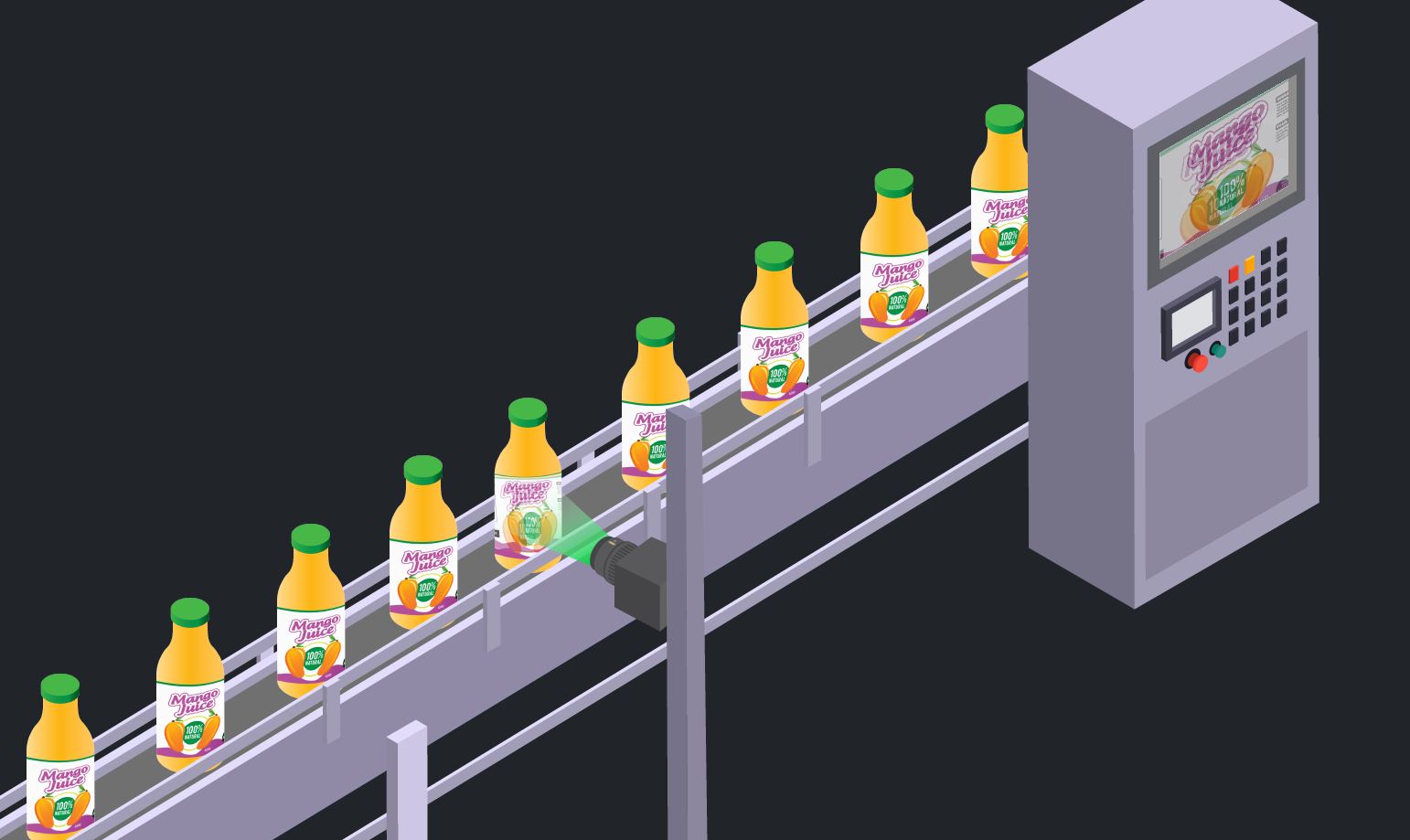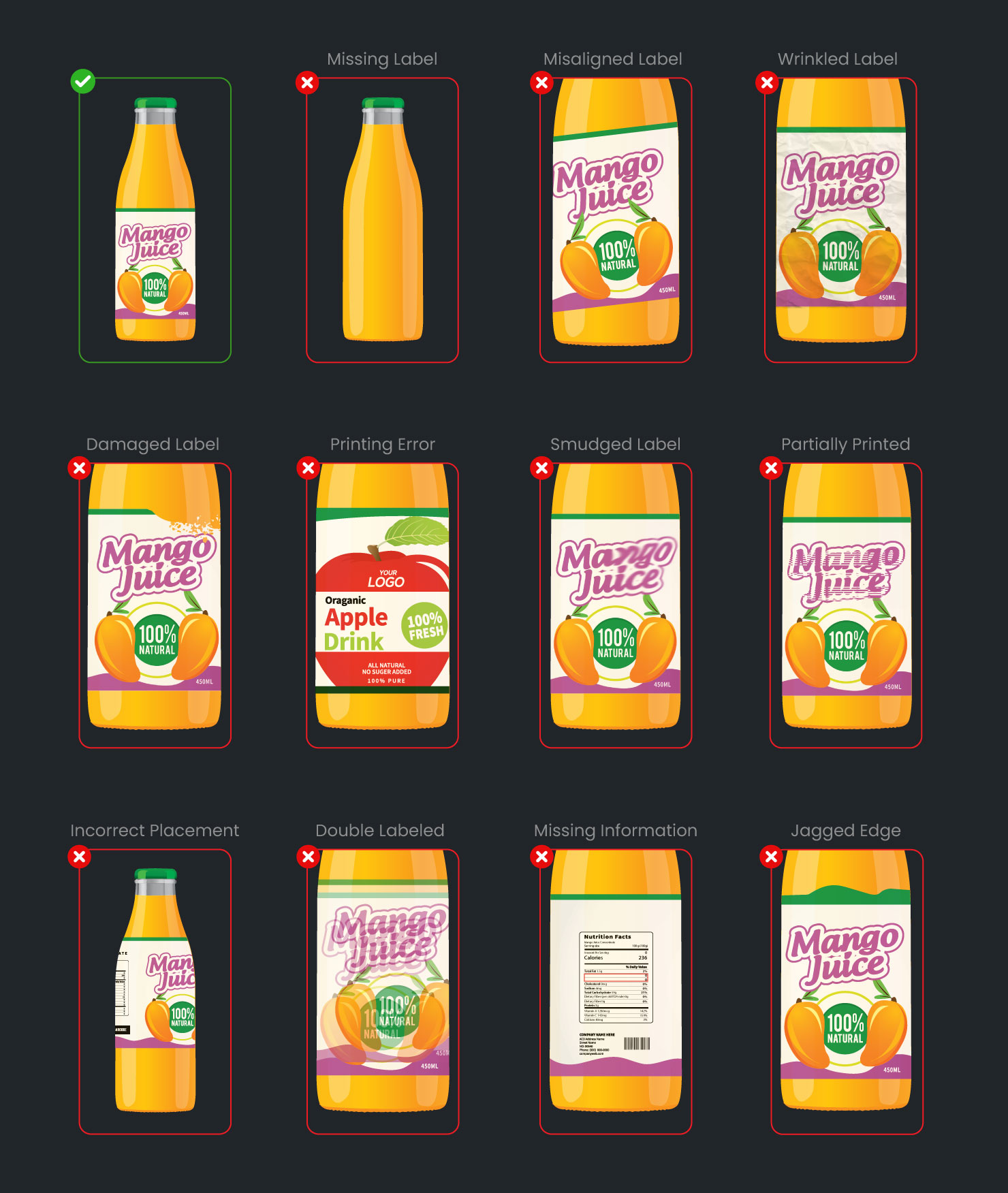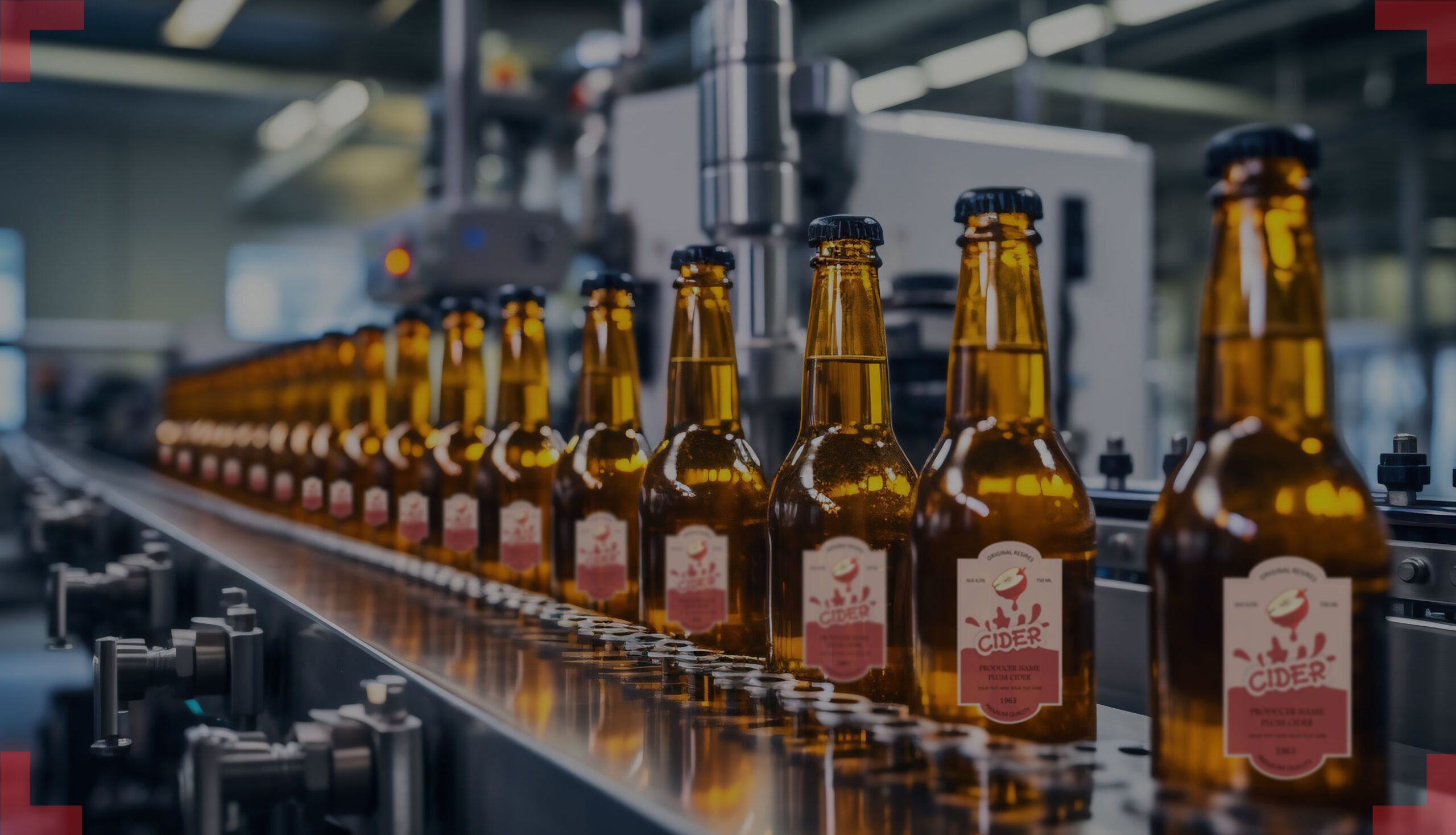Ensuring Quality with Vision AI: 360-degree Bottle Label Defect Detection
- Vathslya Yedidi
- March 19, 2024
Overlooked labeling errors on bottles during production can have significant financial consequences for bottling companies. These errors, such as incorrect ingredient lists (including added minerals or electrolytes), misleading nutritional information, inaccurate volume markings, missing or incorrect barcodes, or incorrect expiration dates printed on labels or bottle caps, can lead to costly product recalls
The True Cost of Labeling Errors in Manufacturing
Beyond the immediate financial costs, the repercussions of labeling errors go much deeper. Over 60 percent of FDA recalls are linked to labeling mistakes, with allergens being the most common issue. These errors can lead to serious consumer safety risks, legal issues, and brand damage due to missing allergen information or incorrect product details.
However, labeling is not just about compliance. It plays a central role in product marketing and consumer trust. Labels convey essential product information, highlight the brand’s value, and enhance the brand’s image and consumer needs. As regulatory standards tighten and consumer expectations rise, flawless labeling has never been more critical.
Transition to Solution
Traditional bottle label inspection methods often rely on manual checks and visual comparisons, which are outdated and error-prone. Given the fast-paced nature of production lines, human inspectors can miss defects such as wrinkles, misalignment, or printing errors. This clarifies that companies need a more efficient and reliable solution to ensure their labels are defect-free. Vision AI offers a smarter solution, automating the bottle inspection process and detecting defects in real-time, ensuring that labels meet quality standards without human error.
In this blog, we will explore the role of Vision AI, the importance of bottle label inspection, the challenges bottling companies face in detecting label defects, and how bottle label inspection with Computer Vision solution can effectively address these issues and provide accurate, compliant, and high-quality labels.
The Role of Vision AI in the Label Defect Detection Process
Label defects affect the product’s aesthetic quality and alter its surface curvature, a key indicator. These issues can drastically compromise the label’s effectiveness and product presentation, resulting in potential consumer distrust and regulatory compliance failures.
With rapid advancements in Computer Vision, Vision AI is changing the bottle label inspection process by offering real-time and automated bottle label defect detection. Unlike traditional manual bottle inspection, Vision AI allows 360-degree scanning and analysis of each label, identifying imperfections that are difficult to spot by human inspectors, especially under high-speed production conditions.
The flexibility of Vision AI brings numerous advantages:
Improved Processing Capacity: Vision AI can handle high volumes of products without reducing inspection quality or speed, ensuring that labels are checked efficiently.
Faster Information Processing: Real-time error detection enables manufacturers to immediately identify defects, ensuring that defective labels are removed before they reach consumers.
Higher Accuracy: Leveraging Deep Learning algorithms, Vision AI can analyze labels with over 95% accuracy, even in challenging environments like poor lighting or intricate label designs.
The Importance of Label Inspection in Bottle Manufacturing Companies
A thorough label inspection process is essential for manufacturers to safeguard their operations and ensure product quality. Proper bottle label quality inspection offers several critical benefits in key areas:
- Product Recalls: Incorrect labeling can result in product recalls at distribution centers and customs checkpoints. This involves stopping shipments, retrieving goods from distributors, and correcting labeling issues to meet regulatory compliance. These recalls disrupt supply chains, delay deliveries, and create added expenses for relabeling, re-inspection, or potential disposal of bottles. Accurate labeling is critical to avoiding these operational and financial setbacks.
- Relabeling Costs: When labeling errors are detected, relabeling becomes necessary. This labor-intensive and costly process involves removing incorrect labels and applying new ones. It can also lead to production downtime and delays in product delivery.
- Loss of Sales and Market Share: Inaccurate labeling can lead to consumer confusion, distrust, and, ultimately, a loss of sales. If consumers are unsure about a bottle‘s requirements, origin, or other vital information, they are less likely to purchase it. This can result in a significant decrease in revenue and a loss of market share to competitors with more reliable labeling practices. This also includes potential legal action from competitors claiming unfair competition due to mislabeling.
- Regulatory Compliance: Ensuring that labels meet all regulatory requirements is crucial to avoid fines, legal penalties, or product recalls. Accurate labeling ensures adherence to industry standards, keeping businesses compliant with laws and regulations.
- Consumer Safety: Labels provide vital information, including allergens, ingredients, and safety warnings, allowing consumers to make informed decisions. Accurate labeling is essential for protecting consumers, particularly those with allergies or dietary restrictions, from potential harm.
- Brand Image: Well-designed, clear, and precise labels enhance the brand image. When applied correctly, labels reinforce the company’s commitment to quality, fostering consumer trust and loyalty. Inaccurate or damaged labels, on the other hand, can harm the brand’s reputation.
- Product Integrity: A label is not just information; it reflects the product’s quality. Misapplied or damaged labels can cause confusion or mistrust among consumers, ultimately impacting sales and undermining the product’s integrity.
- Traceability: Proper labeling ensures that products can be easily tracked throughout the supply chain. This enhances inventory management, facilitates efficient recalls, and ensures that the products meet the required standards every step of the way.
- Counterfeit Prevention: Bottle label inspection is vital in preventing counterfeit products from entering the market. Thorough inspections help ensure that only authentic products with correct, authorized labels reach consumers, thereby protecting the brand and the end user from fraud.
Label Inspection Challenges in Achieving Better Quality Control
While label inspection is essential for maintaining product quality, it presents several challenges that must be overcome to ensure consistency, authenticity, and compliance. Here are some of the key challenges faced by manufacturers:
- Speed and Efficiency: High-speed production lines require label inspections to be conducted rapidly without compromising accuracy. Maintaining fast-paced production while ensuring every label is checked thoroughly can be challenging.
- Variability: Bottles and packaging come in various shapes, sizes, and materials, each requiring different label configurations. This variability makes standardizing the bottle inspection process difficult, as each label must be inspected based on its unique characteristics.
- Quality Assurance: Ensuring that every label meets quality standards is essential. Defects such as smudging, misalignment, or tearing can impact the product’s appearance and compliance with regulatory standards. Achieving high-quality consistency across large batches can be challenging, especially in fast-moving production environments.
- Accuracy: Verifying that labels contain correct information, such as product details, barcodes, and expiration dates, is crucial for consumer safety and regulatory compliance. Any errors in this information can result in legal issues, consumer dissatisfaction, and product recalls.
- Environmental Factors: External factors, including lighting conditions, temperature, and humidity, can affect label adhesion and readability. Variations in these factors can make it difficult for traditional inspection methods to perform consistently, particularly when handling delicate or specialized labels.
- Integration: Successfully integrating label inspection systems with existing production lines and equipment, such as conveyors and packaging machinery, requires careful planning and execution. While integration is essential for streamlined operations, challenges can arise when upgrading older systems or coordinating different production process components.
- Data Management: Another challenge is managing the large volume of data generated by label inspections. Analyzing bottle surface defect detection results and production metrics requires robust data management systems to handle and interpret vast amounts of information in real-time.
- Frequent Label Changes: Marketing and branding updates often necessitate frequent label design changes. This requires continuous adjustments to the inspection process, adding complexity and requiring regular system updates.
Advancements in Label Quality Inspection Using Computer Vision for Bottling

The latest advancements in this technology are transforming the inspection process across various production lines, offering higher accuracy, speed, and efficiency. Deep Learning algorithms analyze vast datasets of label images to detect deviations from predefined quality norms, ensuring that only the highest-quality labels make it onto the bottles.
The inline Bottle Label Defect Detection System uses high-resolution cameras integrated with Vision AI. These cameras capture intricate images of bottle labels, which Vision AI analyzes to detect imperfections. When a defect is identified, the system immediately triggers an alert for reanalysis or reconfiguration, allowing manufacturers to take swift corrective action.
Implementing Vision AI in bottle label inspection has dramatically improved the quality control process, reducing the risk of recalls due to labeling errors. With its ability to detect defects in complex label designs, challenging lighting conditions, and intricate details, Vision AI ensures accuracy exceeding 99%, even under high-speed production environments.
Common Bottle Label Defects Identified by Vision AI are:

- Missing Labels: The complete absence of a label on the bottle.
- Misaligned Labels: Labels that are improperly aligned or positioned.
- Wrinkled Labels: Labels showing visible wrinkles or creases, affecting product appearance.
- Damaged Labels: Labels with visible tears, scratches, or other physical damage.
- Printing Errors: Labels with misprinted or illegible text, graphics, or logos.
- Smudged or Stained Labels: Labels with visible marks, stains, or discoloration.
- Incomplete Printing: Labels with missing or incomplete information, such as barcodes or dates.
- Incorrect or Missing Information: Labels missing critical data, like expiration dates or barcodes, or containing incorrect information.
- Incorrect Placement: Labels placed improperly on the bottle, such as upside down or at an incorrect angle.
- Overlapping or Double Labels: Instances where two or more labels overlap on the same surface.
- Uneven Edges, Corners, & Pleats: Labels exhibiting irregular, jagged edges or corners and unwanted pleats negatively impact the product’s visual appeal.
Measurable Results and Tangible Benefits of Vision AI in Bottle Label Quality Inspection
Vision AI offers significant advantages that go beyond defect detection, providing measurable improvements in overall manufacturing processes:
- Reduced False Positives: Vision AI minimizes unnecessary production stoppages by accurately identifying only relevant defects, ensuring smoother production flow.
- Enhanced Defect Detection: A broader range of labeling defects is identified, ensuring consistently high-quality products that meet brand and regulatory standards.
- Automated Rejection: Non-compliant products are automatically flagged and removed from the production line, reducing human intervention and error.
- Improved Brand Consistency: Consistent, high-quality labels contribute to a stronger, more reliable brand image, reinforcing consumer trust.
Streamlining Compliance, Quality Control, and Brand Protection with Vision AI
Integrating Vision AI into the label inspection process enables bottling companies to maintain consistent regulatory compliance, uphold superior product quality, and reduce rework costs. With Computer Vision and its advanced algorithms, companies can streamline their inspection processes, ensuring only the highest quality bottles reach consumers.
The result is a more efficient, error-free production process that safeguards the brand’s reputation and ensures consumer satisfaction. With Vision AI, bottling companies are well-equipped to face modern manufacturing challenges while maintaining the highest quality standards.
Contact us today to learn how ImageVision.ai can upgrade your label inspection process.

